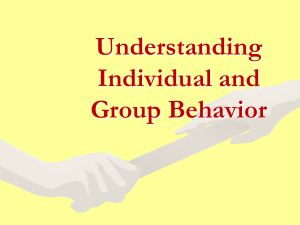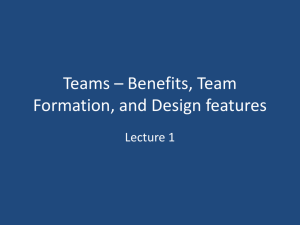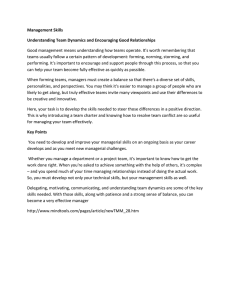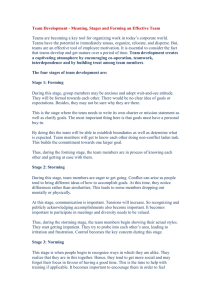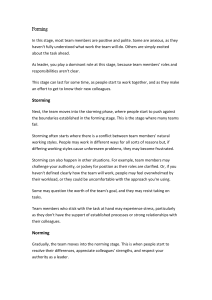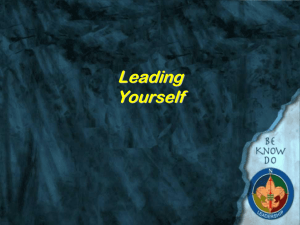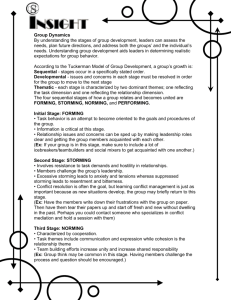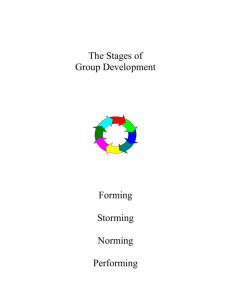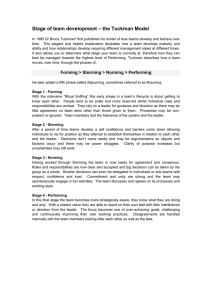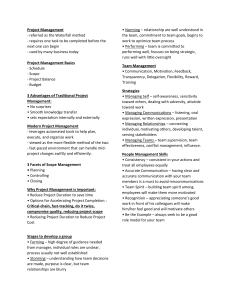Tuckman's Team Development Model
advertisement
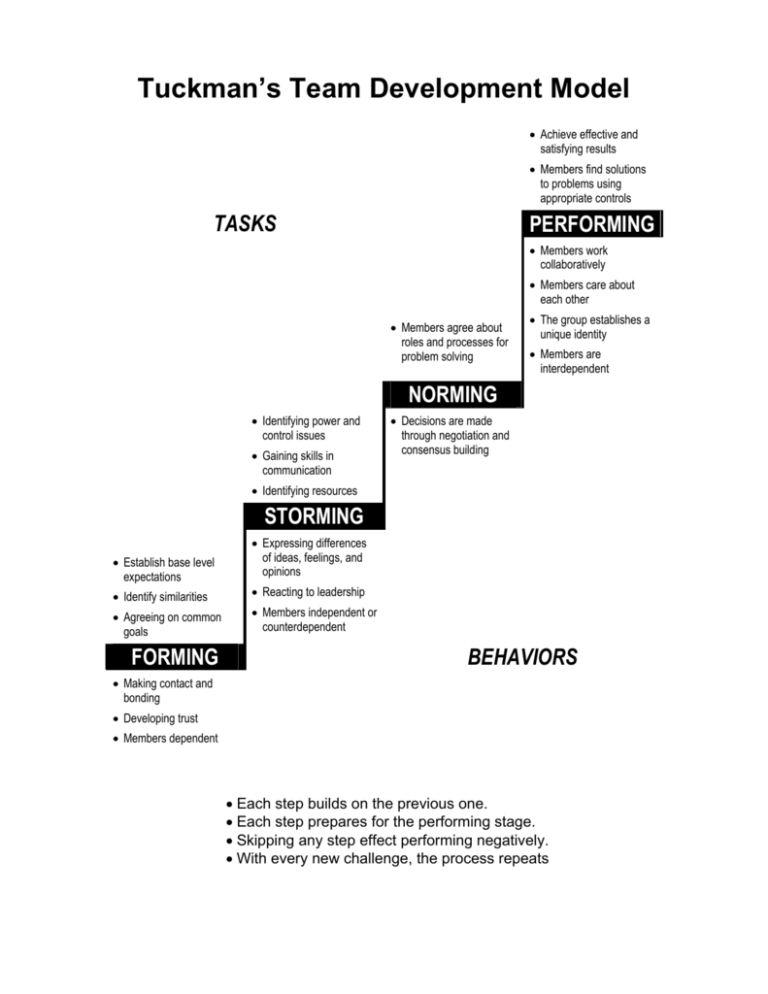
Tuckman’s Team Development Model • Achieve effective and satisfying results • Members find solutions to problems using appropriate controls TASKS PERFORMING • Members work collaboratively • Members care about each other • Members agree about roles and processes for problem solving • The group establishes a unique identity • Members are interdependent NORMING • Identifying power and control issues • Gaining skills in communication • Decisions are made through negotiation and consensus building • Identifying resources STORMING • Establish base level expectations • Identify similarities • Agreeing on common goals FORMING • Expressing differences of ideas, feelings, and opinions • Reacting to leadership • Members independent or counterdependent BEHAVIORS • Making contact and bonding • Developing trust • Members dependent • Each step builds on the previous one. • Each step prepares for the performing stage. • Skipping any step effect performing negatively. • With every new challenge, the process repeats Stages of Team Development Stage 1: “Forming” Stage 2: “Storming” Stage 3: “Norming” Stage 4: “Performing” • Individuals are not clear on what they’re supposed to do. • The mission isn’t owned by the group. • Wondering where we’re going. • No trust yet. • High learning. • No group history; unfamiliar with group members. • Norms of the team are not established. • People check one another out. • People are not committed to the team. • Roles and responsibilities are articulated. • Agendas are displayed. • Problems solving doesn’t work well. • People want to modify the team’s mission. • Trying new ideas. • Splinter groups form. • People set boundaries. • Anxiety abounds. • People push for position and power. • Competition is high. • Cliques drive the team. • Little team spirit. • Lots of personal attacks. • Level of participation by members is at its highest (for some) and its lowest (for some). • Success occurs. • Team has all the resources for doing the job. • Appreciation and trust build. • Purpose is well defined. • Feedback is high, wellreceived, and objective. • Team confidence is high. • Leader reinforces team behavior. • Members self-reinforce team norms. • Hidden agendas become open. • Team is creative. • More individual motivation. • Team gains commitment from all members on direction and goals. • Tea members feel very motivated. • Individuals defer to team needs. • No surprises. • Little waste. Very efficient team operations. • Team members have objective outlook. • Individuals take pleasure in the success of the team – big wins. • “We” versus “I” orientation. • High pride in the team. • High openness and support. • High empathy. • High trust in everyone. • Superior team performance. • OK to risk confrontation. Action Steps: “Forming” to “Storming” • • • • • • • • • • • Set a mission. Set goals. Establish roles. Recognize need to move out of “forming” stage. Leader must be directive. Figure ways to build trust. Define a reward structure. Take risks. Bring group together periodically to work on common tasks. Assert power. Decide once and for all to be on the team. Action Steps: “Storming” to “Norming” • Team leader should actively support and reinforce team behavior, facilitate the group for wins, create positive environment. • Leader must ask for and expect results. • Recognize, publicize team wins. • Agree on individuals’ roles and responsibilities. • Buy into objectives and activities. • Listen to each other. • Set and take team time together. • Everyone works actively to set a supportive environment. • Have the vision: “We can succeed!” • Request and accept feedback. • Build trust by honoring commitments. Action Steps: “Norming” to “Performing” • • • • • • • • • • • Maintain traditions. Praise and flatter each other. Self-evaluate without a fuss. Share leadership role in team based on who does what the best. Share rewards and successes. Communicate all the time. Share responsibility. Delegate freely within the team. Commit time to the team. Keep raising the bar – new, higher goals. Be selective of new team members; train to maintain the tea m spirit.
